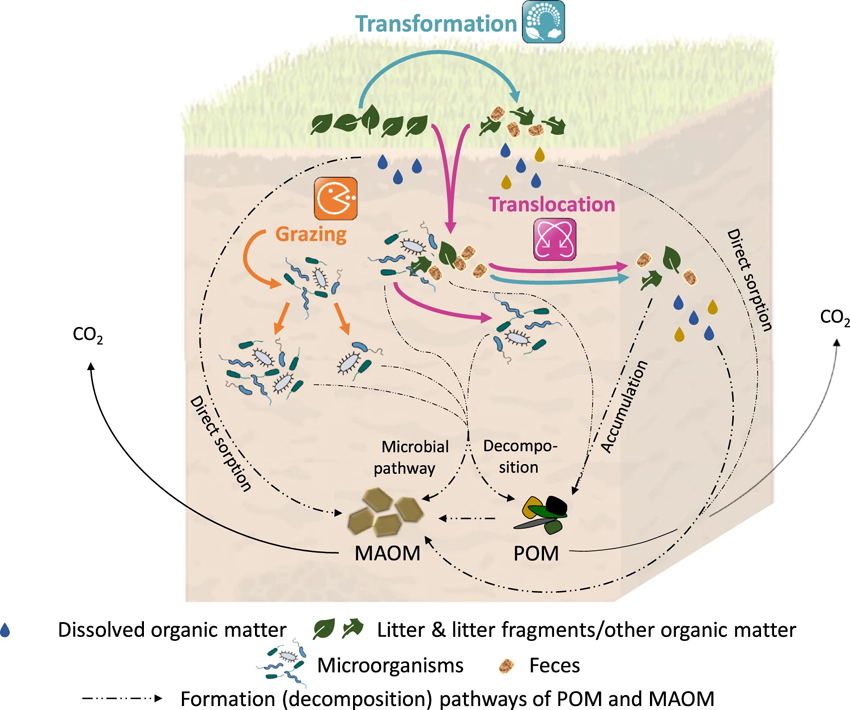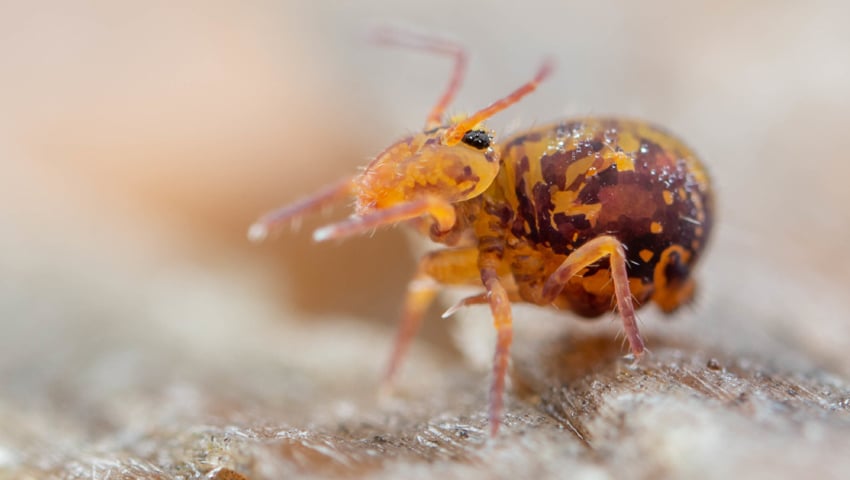A new study, published in Nature Communications, highlights major pathways by which soil fauna can influence soil organic matter stability.
The study, based on a review of more than 180 scientific articles, considers how the ecological strategies of a multitude of soil microfauna can affect the formation and persistence of labile (particulate organic matter, POM) and stabilised soil organic matter (mineral-associated organic matter, MAOM).
The researchers from the Czech Academy of Sciences, the German Centre for Integrative Biodiversity Research (iDiv), Leipzig University (UL) and the Senckenberg Society for Nature Research propose three major mechanisms – transformation, translocation, and grazing on microorganisms – by which soil fauna alters factors deemed essential in the formation of POM and MAOM, including the quantity and decomposability of organic matter, soil mineralogy, and the abundance, location, and composition of the microbial community.
This includes ingestion of plant residues and chemical and physical alteration of this material before egestion as faeces, vertical and horizontal transport of plant residues and organic matter in soil profiles, and changes in microbial community composition and abundance via faunal grazing on microorganisms.

Each mechanism strongly affects the formation of labile and stabilised organic matter in soil, with potential consequences for how soils are managed as carbon sinks, nutrient stores, or providers of food.
The relevance of soil fauna to soil biogeochemical cycles has well been recognised. However, knowledge on how soil fauna influences the formation of particulate (labile) and mineral-associated organic matter (stabilized for centuries to millennia) and the carbon within is widely lacking.
Dr Gerrit Angst, lead author of the study from the Czech Academy of Sciences and iDiv, said, “We were surprised by the scarcity of studies on how, both mechanistically and quantitatively, soil fauna affects particulate and mineral-associated organic matter, which certainly hampers the development of more effective carbon-focused soil management strategies. We strongly emphasise that the processes identified in our review can fundamentally affect the dynamics of particulate and mineral-associated organic matter in soil, while quantitative data, except for earthworms, are virtually absent.”
The authors call for coordinated and cross-disciplinary studies on multiple scales and faunal taxa that combine isotopic, microbial, and molecular methods to help close the major identified research gaps.
Professor Nico Eisenhauer, senior author of the study from iDiv and Leipzig University, said, “Only if we include soil fauna in our concepts and models will we be able to effectively manage soils as carbon sinks, nutrient stores, and providers of food in a rapidly changing environment.”
Read the research, Conceptualising soil fauna effects on labile and stabilized soil organic matter
Main image: Springtails are one of the various taxa focused on in the review. Photo by Frank Ashwood
